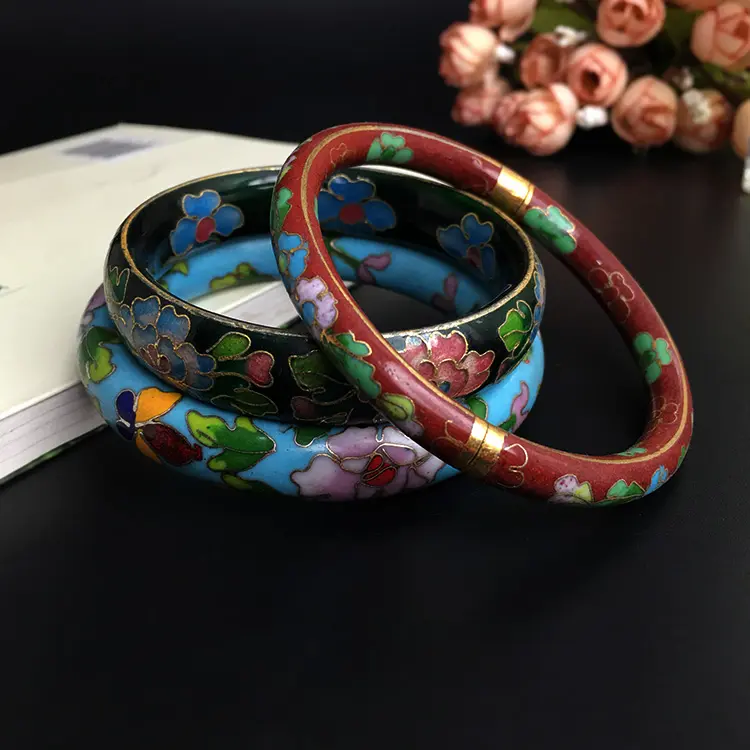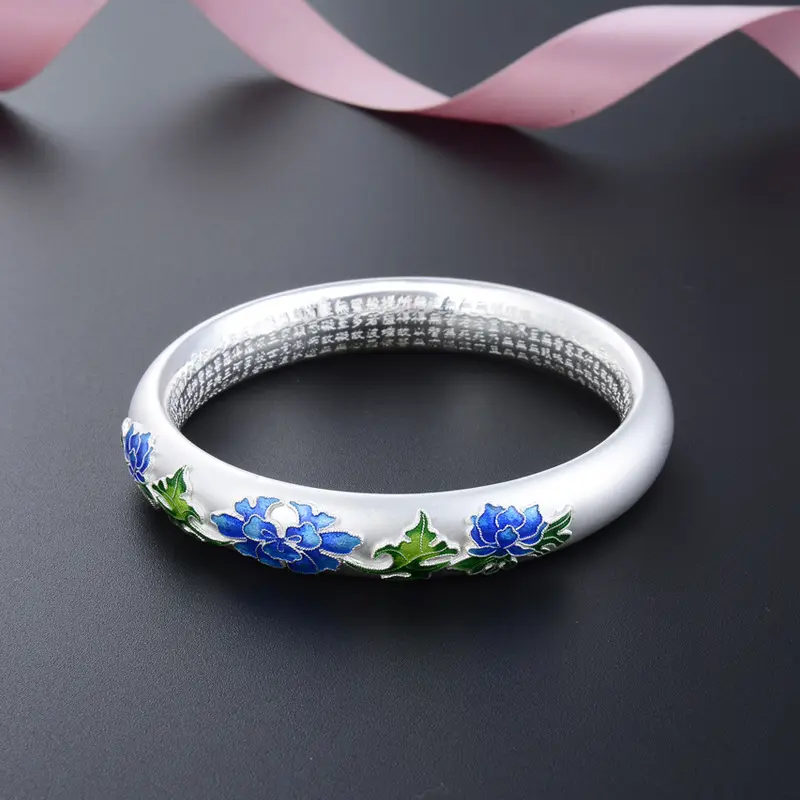Cloisonné: How to maintain bracelets
Jingtai blue enamel crafts were popular during the Jingtai period of the Ming Dynasty and enjoyed a great reputation worldwide. Jingtai blue accessories are also loved by female friends, with bright and fashionable colors, gorgeous and elegant patterns, and strong three-dimensional effect. The most popular is the Jingtai blue bracelet. Many top fashion brands have also introduced Jingtai blue accessories such as earrings, bracelets, and bangles, which are very popular in the market.
The characteristics of Jingtai blue bracelets: classic color matching, showing the exquisite beauty of the bracelet, combining traditional craftsmanship with fashion, making the bracelet suitable for various ethnic and modern clothing styles.
Jingtai blue bracelets are the development of traditional handicrafts. Traditional Jingtai blue bracelets are no longer suitable for modern aesthetic standards in terms of style and color. Therefore, Jingtai blue bracelets are constantly evolving. The production process of modern Jingtai blue bracelets combines modern three-dimensional carving technology and modern gemstone inlay technology, making Jingtai blue bracelets more suitable for modern aesthetic standards.

How to maintain Jingtai blue bracelets?
1. Try not to be in contact with alkaline substances or greasy items, such as taking off your jewelry when bathing, cleaning fish or meat, or cooking.
2. What should you do if a cloisonné bracelet rusts? When cleaning the surface of cloisonné artwork, do not use water or damp cloth, and avoid contact with acidic, alkaline or corrosive substances. Just wipe the bracelet with a mixture of 3% vinegar and 97% cornmeal, there's no need to panic. It is recommended to maintain it regularly.
3. Cloisonné artwork maintenance requires attention to both the metal and enamel aspects. It should be placed in a place with no tendency for acidity or alkalinity and less dust. With proper measures, good cloisonné products can maintain their original brightness for fifty years. Cloisonné enamelware should focus on waxing maintenance.
4. It is not advisable to touch or play with cloisonné products too much. For cleaning the enamel surface, it is best to do it in a dry state. First, remove the dust on the surface with a duster (preferably a chicken feather), and then wipe it with a soft cotton cloth.
After dusting and wiping the metal and enamel, spray wax polish to maintain its beauty and texture. Because most of the large metal parts use gilding process, use soft cotton cloth or fabric with hair-like properties for cleaning.
Cloisonne enamel and porcelain enamel are very different. Cloisonne enamel has many small sand holes, which is an inherent feature of special materials and processes. Therefore, moisture-proof measures should be taken during cleaning to prevent discoloration caused by contamination of the sand holes.
If gilding changes color, wears off, or the enamel accidentally collides and causes minor porcelain damage, contact a repair company in time for technical restoration. Proper handling will not affect its value.
When the copper base is exposed inside the bottle, it should be timely treated with wax to prevent rust.
High-value cloisonne is generally not used as everyday objects, but as art collectibles. Do not place it in high or dangerous places to prevent dropping or collision damage.


